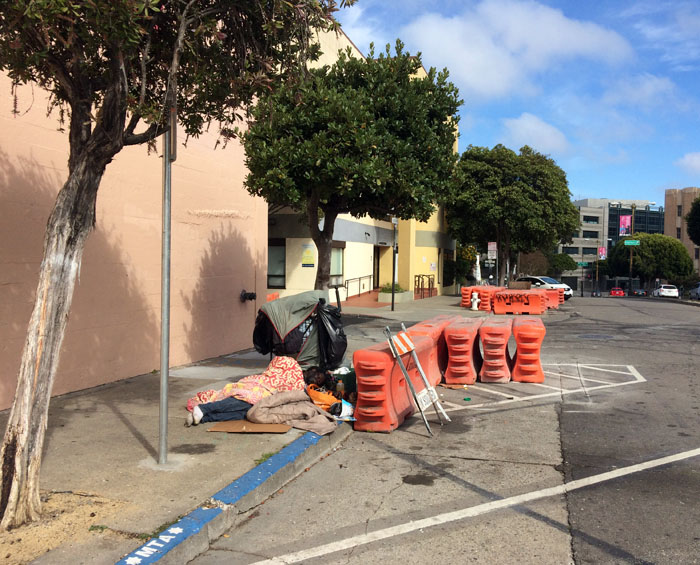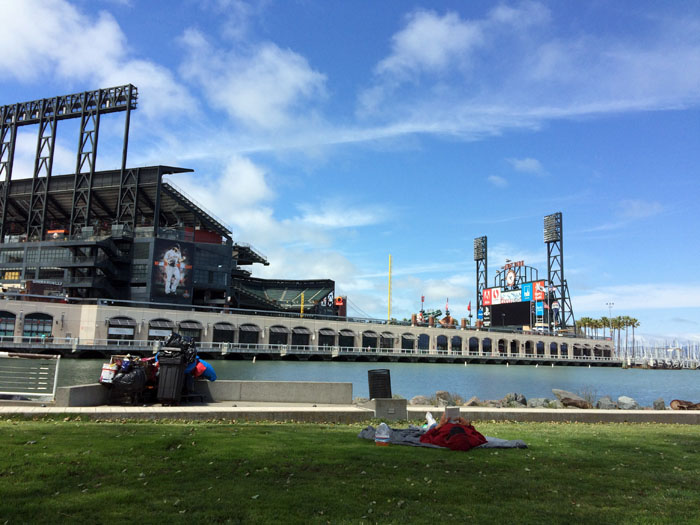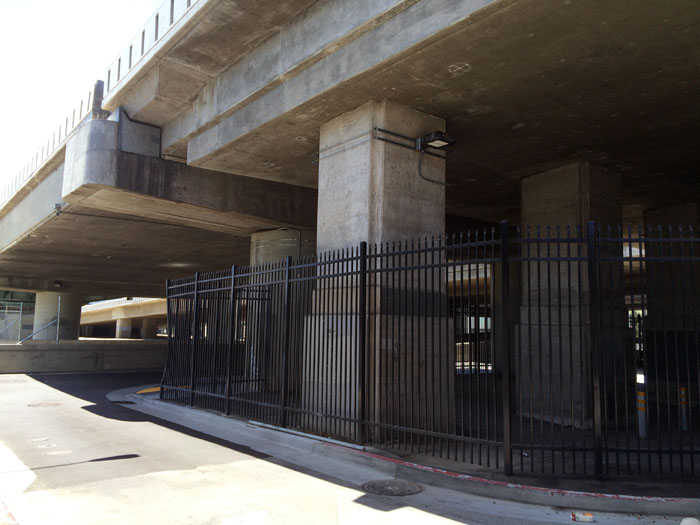Last year, a former police chief from Pennsylvania who founded a non-profit that feeds the homeless in Fort Lauderdale, Florida, said that the strategies the city is using to expel the homeless are “very close to ethnic cleansing.” While ethnic cleansing is inarguably a strong statement, recent strategies there and elsewhere might mimic something close.
Sari Hanafi, a professor of sociology at the American University of Beirut, calls the Israeli colonization of Palestine “spacio-cide” in that, as he explained, “it targets land for the purpose of rendering inevitable the voluntary transfer of the Palestinian population primarily by targeting the space upon which the Palestinian people live.” American “anti-homeless urbanism” is aimed at achieving a similar totalizing effect that politically and spatially dismantles the entire agency of “public” upon which the homeless landscape operates. The strategy is to force homeless persons to evict themselves; to voluntary abandon the city. Not only is the very tenet and universal right to “public” exceptionally criminalized for the homeless, it challenges the role of infrastructure more universally, and, calls into question the integrity of the Eighth Amendment, which prohibits the government from imposing cruel and unusual punishment onto its people. We must ask, does the idea of “public” even exist anymore?

Using Hanafi's concept, the nature of this spaciocide could be characterized by: (1) it being part of an ideology that targets the urban poor as capitalism's antagonizers; (2) anti-homeless laws that are justified not only on political and security—but even humanitarian—grounds; (3) “homeless” as a category that represents the state's rendering of the poor into near right-less bodies; (4) deploying spatial devices that are not demarcated outright as segregationist, but with the objective of exiling the homeless from public space; (5) the fact that it is multi-dimensional.
The spaciocide against homeless occupation is a landscape designed to strip bare the homeless right where they stand. It amounts to a complete negation of homeless rights, infrastructure, and ability to acquire jobs and services that exist outside of designated shelters and providers where the homeless can be tracked. It also threatens to supplant a public infrastructure with a newly amplified policed one.
City surfaces are armored with a taxonomy of miniature barricades. Street furniture is designed to make longterm rest impossible, particularly for the most needy—discomfort as design principle. Barbed bushes and cactuses act as green barriers to crawl spaces, while streets popular for gatherings are bleached to discourage overnight assemblies. Gates seal alleyways and construction sites that offer respite. Parks are sprinklered at night to make grounds too wet for camping. Freeway overpasses and empty lots are fenced off, while floodlights expose the homeless to other violent elements. A barrage of noise irritants have been used with loudspeakers in downtown parks and lots overnight. Some devices function at specific frequencies only audible to teenagers to make loitering undesirable. Colored lights are placed inside bathrooms to make seeing veins under the skin difficult, dissuading illicit drug use; outdoor restrooms charge money the homeless can't afford; water faucets in park toilets have either been shut off or redesigned to prevent sinks from being used for hair washing, and so on. Roadway medians have been deemed places of trespass. Bundled belongings are routinely confiscated, trashed, or discarded. Camps are destroyed and banned from the city. Homeless people are constantly intimidated by security guards, profiled, rounded up by police, and relocated away from popular city events under the pretexts of preventing tourist harassment. Entire downtowns are turned into “beggar free” zones.

This only scratches the surface of the physical architecture of displacement. Yet, it couldn't succeed without the buttress of an equally draconian legal architecture to sanction the mechanisms that make it virtually impossible to (lawfully!) live below the poverty line. A recent study found that California alone has 500 laws on its books across fifty-eight cities, an average of nine in each. Even the ACLU is pleading with Berkeley lawmakers to reconsider its homeless policy framework. The London borough of Hackney just passed a “Public Space Protection Orders” law giving authorities powers to remove a broad spectrum of people almost at will from downtown.
While camping in the American city is generally illegal, sleeping in vehicles overnight is becoming increasingly illegal too, and more dangerous. Sacramento has an ordinance that outlaws camping on private property for more than one night, prompting claims that such laws have caused a 2,400 percent leap in Sacramento's city camping citations. The homeless have long since been priced out of public transportation. And the library, a homeless sanctuary for decades, has begun preventing people from napping and using restrooms based on various new policies, including an “anti-odor” law. Many lack access to clean water, and are often ticketed for simply being homeless.

Over the past twenty years a litany of ordinances has stacked up to curb homeless-specific behavior, by also purposefully confusing it with various forms of general anti-social behavior. With bans on panhandling, loitering, littering, smoking, public urination/defecation, sitting, and lying on the pavement, poor people are also subject to harsh jaywalking fines and twenty-four-hour "stay away" ordinances from recreation spaces. Shockingly, the public's right to hand out food is becoming illegal. Some cities, like San Francisco, have privatized the recycling industry and removed the public facilities and monetary capabilities that sustained recyclers for generations. The California Highway Patrol (CHP) apparently has a program that relieves homeless people from arrest by coercing them into participating in officer training programs that help identify specific drug-use behaviors. Fines levied for vagrancy can be so high that it's impossible for any homeless person to pay them, prompting arrest and often thirty-day jail sentences that only build a criminal record.
City planners zone out and ghettoize non-profits assisting the homeless along urban peripheries, and use shelters to keep biometric identity records of the poor that feed into police databases. Cities have even been known to offer one-way bus tickets to homeless people during holidays to “visit their families” in other states. Worse, some, like Las Vegas, have literally rounded up their homeless communities and bussed them across state lines to be dumped in other locations.

How telling is it that some State Assemblies have finally been pressured to pass a Homeless Bill of Rights? Sadly, we're complying with an “out of sight, out of mind” culture of extreme negligence that institutionalizes the removal of an entire population for which the ideologies of neoliberal capitalism and urban paranoia only further perpetuates. In the process, we're ruining the remains of any “public” that invariably pertains to us all.

